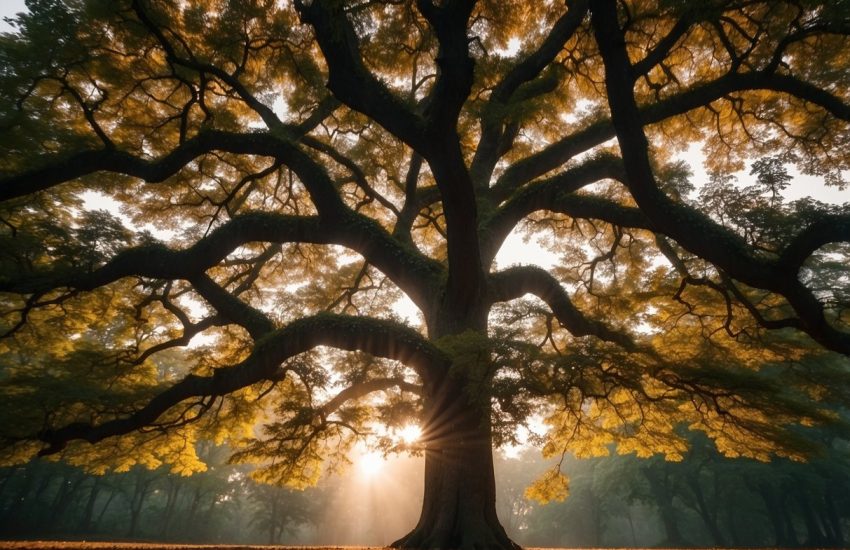Ornamental Trees to Grow in Michigan
Landscaping is the process of transforming a space into a usable and visually appealing environment. A well-designed landscape will boast a variety of different elements, including hardscape features such as patios and walkways, as well as softscape features such as trees, shrubs, and flowers. While both types of features are important, ornamental trees play a particularly pivotal role in creating a complete landscape. Not only do they add color and visual interest, but they can also provide privacy, shade, and even noise reduction. When selecting ornamental plants for a landscape, it is important to consider the climate, the soil type, and the amount of sunlight the space receives. These ornamental trees can beautify any Michigan Landscape.
American Elderberry (Sambucus canadensis)
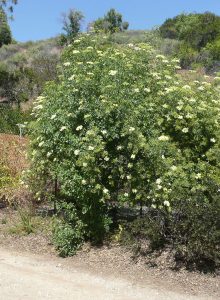
The American elderberry (Sambucus canadensis) is a beautiful, deciduous shrub that can add interest and color to any landscape. The elderberry is native to North America and can be found in woodlands, along roadsides, and in other open areas. The elderberry is a fast-growing shrub that can reach a height of 10 feet (3 meters) and a width of 6 feet (1.8 meters). The elderberry has dark green leaves that are 3-6 inches (7.6-15 cm) long and 2-4 inches (5-10 cm) wide. The elderberry produces small, white flowers that grow in clusters. The flowers are followed by small, black berries that are edible and have a sweet taste. The elderberry can be used for landscaping, decoration, and culinary purposes. The elderberry can be planted as an informal hedge or border plant when used for landscaping. It can also be used as an accent plant or as part of a mass planting. The elderberry can be planted in containers or on the ground when used for decoration. The berries can be used to make pies, jams, and other dishes.
American Plum (Prunus americana)
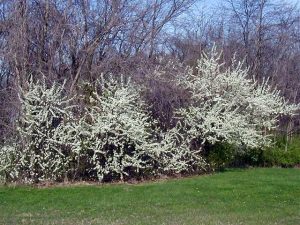
The American Plum (Prunus americana) is a deciduous tree native to North America. It typically grows to a height of 15-20 feet and has a spreading canopy. The leaves are oval-shaped, have serrated edges, and the flowers are white and bear in clusters. The fruit is a small, round plum that is dark purple.
The American Plum is a popular landscaping and decoration tree due to its attractive appearance. It can be used as a specimen tree or planted in mass for a screen, and it is also commonly used as an ornamental tree in public parks and gardens. The American Plum is drought tolerant and prefers full sun to partial shade. It is relatively easy to care for and does not require pruning unless desired for shape.
Basswood (Tilia americana)
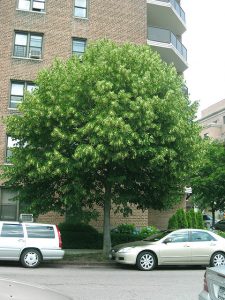
Basswood (Tilia americana) is a beautiful ornamental tree native to North America. Also known as American linden, this tree is widely cultivated for its attractive foliage and fragrant flowers. Basswood trees typically grow to a height of 40-60 feet and have a spread of 30-40 feet. They are characterized by their large, heart-shaped leaves and showy clusters of small yellowish-white flowers. Basswood trees are relatively easy to care for and make an excellent addition to any landscape. They prefer full sun to partial shade and well-drained soil. Basswood trees are also tolerant of a wide range of pH levels, making them ideal for use in various settings. For best results, plant basswood trees at least 20 feet apart. This will allow them enough room to reach their full potential.
Blackhaw Viburnum (Viburnum prunifolium)
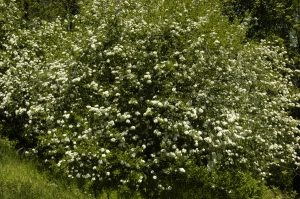
Blackhaw Viburnum (Viburnum prunifolium) is a deciduous shrub that is native to North America. It is a member of the Caprifoliaceae family, which includes other well-known plants such as elderberry and honeysuckle. Blackhaw Viburnum typically grows to be 15-20 feet tall and wide, with a rounded form. The leaves are dark green and ovate-shaped, with serrated margins. In the spring, the plant produces small, white flowers that are arranged in clusters. Blue-black berries follow these in the fall. Blackhaw Viburnum is a versatile plant that can be used in a variety of landscape settings. It is tolerant of both full sun and partial shade and prefers moist, well-drained soil. It can also withstand periods of drought once it is established. In addition, Blackhaw Viburnum is relatively low-maintenance and pest-resistant.
Buttonbush (Cephalanthus occidentalis)

Buttonbush (Cephalanthus occidentalis) is a deciduous shrub that grows to a height of 6-12 feet. It has a rounded form with dense, glossy green leaves. The flowers are white and spherical, growing in clusters at the ends of the branches. Buttonbush blooms in late summer and early fall. The fruits are small, black berries that are attractive to birds.
Buttonbush is a versatile plant that can be used for both landscaping and decoration. It can be planted as a specimen shrub or used in mass plantings to create a hedge or privacy screen. It also makes an excellent addition to naturalized areas and butterfly gardens. Buttonbush can be grown in full sun or partial shade and prefers moist, well-drained soil.
Ninebark (Physocarpus)
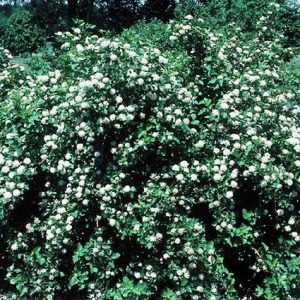
Ninebark is a shrub that belongs to the Rosaceae family. There are about 35 species in this genus, many of which are native to North America. The most common variety is Physocarpus opulifolius, also known as Eastern ninebark or American ninebark. This shrub grows about 10 feet tall and 6 feet wide and has clusters of small, white flowers blooming in the springtime. The leaves are dark green and turn red or purple in the fall. Ninebark is an easy plant to care for and can tolerate a wide range of growing conditions. It is often used as an ornamental plant or for landscaping purposes.
Ninebark prefers full sun or partial shade and moist, well-drained soil. It is tolerant of drought and clay soils. This shrub can also withstand cold winters, making it a good choice for gardens in northern climates. When planted in full sun, ninebark will produce the most flowers.
This plant is relatively low-maintenance and does not require a lot of pruning. However, you may want to trim back any dead or damaged branches in early spring before new growth begins. Ninebark can be propagated from softwood cuttings taken from spring through summer.
A few pests can affect ninebarks, such as Aphids, powdery mildew, and leaf spot. These problems can usually be controlled with insecticidal soap or neem oil solutions.
Ninebark is a versatile shrub that can be used in many different ways in the garden. It makes an excellent addition to flower beds, foundation plantings, and wildlife gardens.
Double Mock Orange (Philadelphus coronarius)

The Philadelphus coronarius, also known as the Double Mock Orange, is a deciduous shrub native to southern Europe. It is a member of the Hydrangeaceae family and is closely related to the hydrangea. The double mock orange is a vigorous grower and can reach a height of 6-10 feet with a spread of 4-6 feet. It has an upright, rounded habit and produces dark green leaves 3-6 inches long. The leaves are arranged in opposite pairs on the stem and have serrated margins. In late spring or early summer, the double mock orange produces large, showy flowers borne in clusters of 4-12. The flowers are white or cream-colored and have a strong fragrance. They are followed by spherical, orange-red fruits that mature in fall. The double mock orange is an excellent ornamental and landscaping plant. It can be used as a hedge, Foundation planting, or specimen plant. It is also deer resistant and tolerant of Black walnut toxicity.
Flowering Quince (Chaenomeles)

The Flowering Quince, scientifically known as Chaenomeles, is a beautiful and versatile shrub that can be used for both landscaping and decoration. Native to Asia, this plant has been introduced to Europe and North America, where it has become a popular choice for gardens and parks. The Flowering Quince is a deciduous shrub that typically grows to be between three and six feet tall. It has dark green leaves and white or pink flowers that bloom in the spring. The fruit of the Flowering Quince is edible, but it is quite sour and is often used for making jam or marmalade.
The Flowering Quince is reasonably easy to care for, although it does require regular pruning to maintain its shape. It can be grown in full sun or partial shade and prefers well-drained soil. This shrub is quite versatile and can be used in various ways in the landscape. It makes an excellent specimen plant or hedge and can also be trained to grow against a wall or fence.
Highbush Cranberry (Viburnum trilobum)
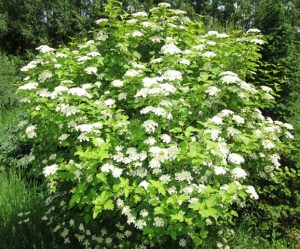
The highbush cranberry (Viburnum trilobum) is a deciduous shrub native to North America. It grows 6-12 feet tall and has elliptical-shaped leaves that are 3-6 inches long. The highbush cranberry blooms in the spring, and its flowers are white or pink and grow in clusters. The fruit of the highbush cranberry is red and resembles a cranberry. It is edible but tart, so it is often used for making jams and jellies.
The highbush cranberry can be used as an ornamental plant in the landscape. It has showy flowers and bright red fruit that remain on the shrub well into the winter months. The highbush cranberry is also a good choice for naturalizing an area, as it can spread quickly by suckering. However, it can become invasive if not kept in check. When planting highbush cranberries, be sure to give them plenty of room to spread. They will do best in full sun to partial shade and moist, well-drained soil. Highbush cranberries are relatively low maintenance once they are established and resistant to deer and rabbits. You can prune them in late winter or early spring if you want to control their size or shape.
Juneberry (Amelanchier)
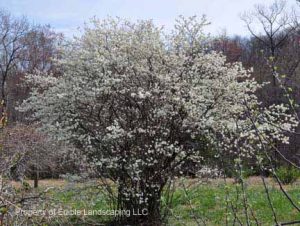
The Juneberry, also known as the serviceberry or shadbush, is a North American native plant that belongs to the Rosaceae family. It is a deciduous shrub or small tree that typically grows to a height of 15-25 feet. The leaves are oval-shaped and have serrated edges. They are dark green and turn yellow, orange, or red in the fall. The flowers are white and borne in clusters. They appear in early spring and give way to small, round fruits that ripen from green to red or purple in late spring or early summer. The fruits are edible and have a sweet flavor with a hint of almond. Juneberries are generally low-maintenance plants that are tolerant of a wide range of growing conditions. They are also suitable for use in naturalized areas or as understory plants in woodland gardens. In addition to being attractive ornamental plants, Juneberries are an important food source for birds and other wildlife.
Mountain Ash (Sorbus subg. sorbus)
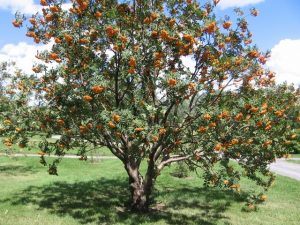
The Mountain Ash (Sorbus subg. sorbus) is a deciduous tree native to the mountains of Europe and Asia. It is a member of the rose family (Rosaceae), and its closest relative is the Rowan (Sorbus aucuparia). The Mountain Ash is a large tree, reaching up to 30 meters in height, and its leaves are oval-shaped and have serrated edges. The tree is covered in small white flowers in the spring, which give way to clusters of red berries in the fall. The berries are an important food source for wildlife, and the tree is also a popular ornamental plant.
Mountain Ash trees are prized for their ornamental value and are often planted in gardens and parks. They are easy to care for and require little maintenance. Mountain Ash trees are tolerant of various soil types and exposure levels, making them suitable for a wide range of locations.
White Oak (Quercus alba)
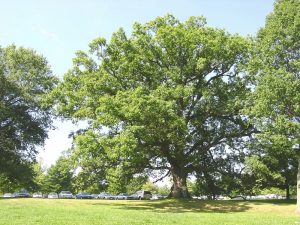
White Oak (Quercus alba) is a deciduous tree native to North America. It can grow up to 100 feet tall, and its trunk can be up to four feet in diameter. The bark is pale gray or whitish, and the leaves are dark green and glossy. White Oak is a popular choice for landscaping because it is adaptable to various soil types and prefers full sun. It is also relatively drought-tolerant and resistant to pests and diseases. When choosing a White Oak for your landscape, be sure to select a variety that is suited to your climate zone. White Oak is available in both seedlings and transplants from nurseries.
Once you have selected a healthy White Oak tree, dig a hole twice as wide as the tree’s root ball. Place the tree in the hole, so the roots are spread out evenly. Backfill the hole with soil, and then water the tree deeply. Keep the soil moist but not soggy during the first growing season. After the first year, you can reduce watering to once per week. Fertilize your White Oak tree twice per year – once in spring and once in fall – with a balanced fertilizer designed for trees and shrubs. With proper care, your White Oak will thrive for many years to come.


